Chris was stabbed in the thigh, buttocks and back, with a large kitchen knife. The attack on the 16-year-old on a North London street by masked youths, in what was described as a premeditated ‘set up’, left him clinically dead.
“He was code red - which means he nearly died or his heart stopped,” says John Reece, who met Chris in St Mary's in Paddington, London.
Reece is not a doctor, or any kind of medical professional. He’s a youth worker, one of just a handful who are embedded in London’s four major trauma units. They are part of a small charity called Redthread, which works to change the lives of young people caught up in youth violence, by supporting them at the most critical moments, often when they are close to dying.
Chris was saved by a blood transfusion, and would have lost his life had it come ten minutes later. He was involved in gangs, and violence was a big part of his life. Some of his friends have been stabbed to death or injured. Yet when he started talking to Reece and the other Redthread worker at St Mary’s hospital in Paddington, Anne-Marie Burr, Chris seemed unable to process his situation.
“He didn’t seem to get what happened,” Reece says. “He had a lot a lot of bravado, it’s like he thought he’d go back and retaliate. It took a long time for us to get through to him. He’d always talk, he’d talk so much, as a way of blocking out what happened to him. It was his way of not having to deal with actually dying.”
Chris was one of more than 100 young people treated at the major trauma unit at St Mary’s every year as the result of youth-on-youth violence.
Reece and Burr were there for every step of Chris’s hospital experience, as they are for many other young people – often from the moment they are wheeled off an ambulance or when they come round in resuscitation (nicknamed ‘resus’).
The charity calls this surreal period a “teachable moment”, when a young person is vulnerable, shocked and removed from their daily lives and they are particularly able to help them.
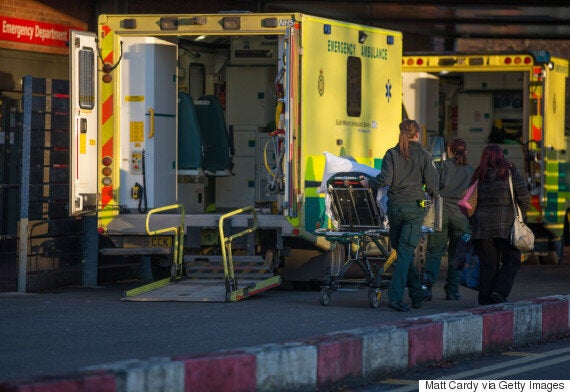
Redthread often meet patients as they come in on an ambulance [file photo]
Redthread workers are present alongside the doctors and act as people that teenagers can relate to, discuss problems beyond their traumatic injuries. They connect them to services like social workers, education and housing support that can make their lives safer they leave the hospital.
Redthread’s hospital programme launched in 2006 and is the only one of its kind in the country. Since it rolled out to St Mary’s hospital in 2014, Reece, 35, and Burr, 28, have witnessed the effects of horrific violence.
“The injuries vary so substantially,” says Burr. “In a two-week period you could have everything from a small stab wound to an arm, to eight or nine stab wounds in a back, and they could be a similar age range and similar kinds of stories.”
“It’s also gunshots we see,” adds Reece. “Less than stabbings but we do see occasional gunshots too. I think the average age of young person that comes in is quite difficult to answer, but I’d say around 16 or 17.”
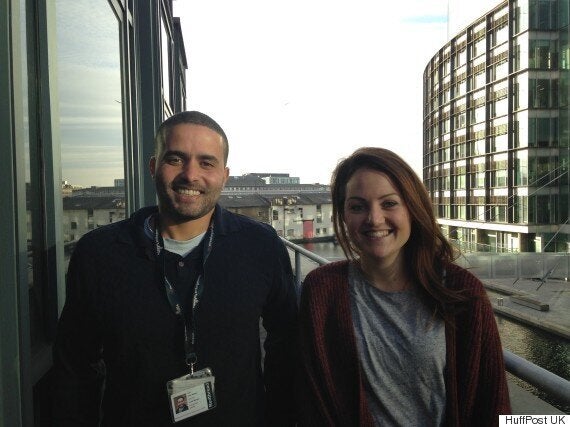
John Reece and Anne-Marie Burr work with critically injured young people
In 2013, the year before Redthread started work, 170 people aged 11-25 came to the major trauma unit with life-threatening injuries due to violence, while another 300 also came through A&E with less serious wounds.
Some young people are stabbed in the buttocks or the back of the legs. “We have heard that it can be like a warning sign, stabbing them in the bit of flesh in the buttocks,” says Reece. “It’s quite humiliating to be stabbed in the buttocks and it’s hard to walk afterwards.”It’s thought that attackers believe a wound in these area of the body will just ‘send a message’ rather than killing a victim, but if they strike the major artery in the upper legs it can be fatal.
Reece and Burr work within the medical teams and share their medical data, so they can track the ages of patients coming in on ambulances.
“Usually someone from downstairs will give us a ring, or we’ll see on the system that somebody of our age range has come through, so we’ll go downstairs and meet them with the ambulance crews, and listen to the doctors and consultants do their brief around what’s happened.”
They’ll decide when it’s appropriate to start working with a young person – often it’s in those early, traumatic moments.
“We find it’s most beneficial to the relationship if we get in there straight away,” Reece says. “So in resus when they’re most vulnerable, when there’s lots of people round them. We have someone who will come in and make some sort of connection with them, try and calm them down but also see if we can do anything for them. That’s the point in the relationship that we have with them that’s the most critical, and we can really make an impact.
“For a lot of the young people who come in, their experiences before they come here mean time to reflect can be difficult. Maybe they’re in danger, with lots of things going on. They come here and it’s quite a unique time in their lives where they are by themselves, they are in a bed, they can’t move. They get a lot of time to think and that’s why it’s important if we can come in and see what we could put in place for them to be safe.”
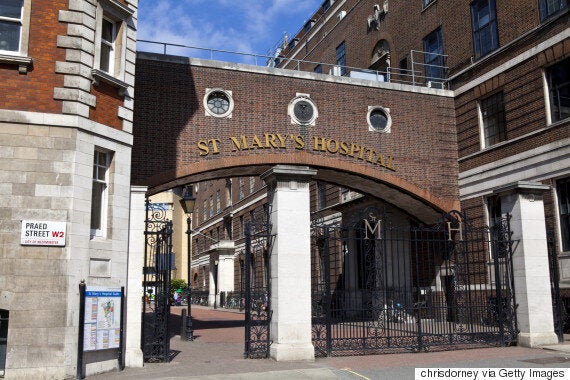
St Mary's hospital in London
For another young person, Ben, being told he was three centimetres from death made him rethink his life.
"I went into deep thought about where I wanted to be, and where I could have been,” says the 19-year-old, who was stabbed in the chest while riding his bike.
He was approached by three boys aged around 15, who attacked him in a neighbourhood well-known for gang violence. They didn’t know Ben but stabbed him because as an unknown person in their area, they assumed he was a rival.
Bleeding and close to death, Ben managed to cycle a mile to his aunt’s house, before being taken to A&E. It was the second time he had been stabbed in two years.
Ben was not in a gang but his association with school friends made him vulnerable to attack. When the hospital consultant told him the attack was almost fatal, it sharpened Ben’s focus on going to university.
“He is a very bright young man, but lived in an area with a lot of gang violence, where stepping into the wrong neighbourhood is dangerous,” says Reece.
Ben has now moved out of London and started a new life. He is deeply thankful to Reece: “He made me feel assured I was lucky and that the incident shouldn’t deter me from going to uni and achieving my goals.” His studying will lead him to good things, he hopes: “There are more opportunities here than the waste of time ones on the road".
Reece and Burr's happiness is palpable when they talk of success stories: “I had a young guy phone me the other day to tell me he got a job, and I was like ‘Ah, this is brilliant,’” says Burr. “He’d felt like he wanted to share that, so those relationships, they don’t go away.”
Young people in hospital will often first ask them for food, or help negotiating their visiting hours so that more friends and family can see them. Equally, the workers sit with them over weeks in wards when family are too busy to come, answering any questions and helping them understand what’s going on. Slowly, they will start to talk about what happened.
It’s not always easy to spot if an injury is gang-related, says Asif Rahman, an A&E consultant at St Mary’s. “You’ve got the blatantly obviously ones like, ‘I’ve got a knife in my chest’. But we see a lot of young people come in with wounds to their hands or their arms, or who have been stabbed, who say, ‘Oh I’ve fallen on a bit of glass.’
He values Redthread’s ability to build up a bond with young people: “If I tell a patient that their story’s obviously not true, they’ll just say no, because they don’t have that degree of trust with me yet, nice and friendly as I normally am.”
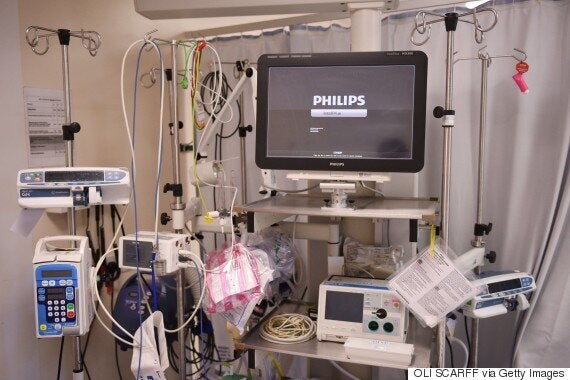
Some patients are resuscitated after their injuries [file photo]
Young people’s involvement with crime often has a backstory – many have got into difficult or desperate situations through problems with things like housing, employment or family. “It’s symptoms of other things rather than just violence, so things are highlighted like mental health issues, like anxiety,” Reece says. “There’s loads of different things that people have brought out, and they didn’t even realise they had them until they’ve been on that resus table.”
When the young people leave hospital, Redthread eventually steps back and links them up with services to help them in whatever aspect of their life they need - though Reece and Burr take a keen personal interest in their futures beyond St Mary's.
“Gangs and youth violence is a public health problem,” says Rahman, who says anecdotally that he has seen more cases of youth violence in the last few years. “We’re seeing people coming in and out, in and out. We’ve got recent sad stories of people who we’ve tended to here several times.”
Redthread, which was shortlisted at the Centre for Social Justice Awards last year, has helped the work of doctors since setting up at St Mary’s, he says. Reece and Burr can de-escalate situations when a young person reacts badly to a doctor. “These can be quite difficult people to work with because they’re nervous, they’re scared, but the guys come in and help with that, so actually it’s easier for us.”
“If I come up to you and say we’re going to put a big drain in your chest, a lot of people say no. It probably comes out the wrong way when we’re rushing around, because it’s very medicalised. So to have the guys come along and explain it in terms they understand is more comforting for the patients. They help bridge that gap.”
“Obviously NHS staff are really rushed off their feet: they do great jobs but we’re getting so many people now that these one probably weren’t getting the whole package – pastoral, non-clinical care. It’s not that staff didn’t want to do anything, but it’s very difficult when you’re a nurse running around at 3am in the morning with four patients in resus. We all know that the reason these young people are in hospital is multi-factoral: their social issues have a knock-on effect on their health.”
Although gang violence often grabs headlines, it’s reductive to blame all youth violence on gangs, Burr explains: “I think it’s easier to label it, but actually you often can’t, because you could have somebody in with a tiny wound who presents as one thing, and then you find out later down the line as you get to know them that it’s something completely different.
“Or you could get a young person in whose been stabbed multiple times, and on the surface you could make a judgment that it looks like this is a revenge attack, and actually when you get to know them, it was something totally random, in a totally random location.”
One young boy they worked with, Peter, was simply unfortunate. “He was out with some friends and a large fight happened," she says. Everybody left the building where the fight had happened, and outside there were a lot of people gathering, and in the process of that, another fight occurred. He was in the wrong place at the wrong time and got stabbed multiple times, with his friends present.”
Even in such an arbitrary attack, Peter’s social group was immediately at risk of more violence, especially because his friends witnessed the attack and may have seen the culprit. So the 'teachable moment' was around safety and retaliation, says Burr.
“What happens when he goes home? What are his friends now thinking? He might never have considered his life to be part of youth violence, but unfortunately, everyone in his life and in his close circle of friends is now. There is that concern that they might retaliate, because they are angry about their friend.”
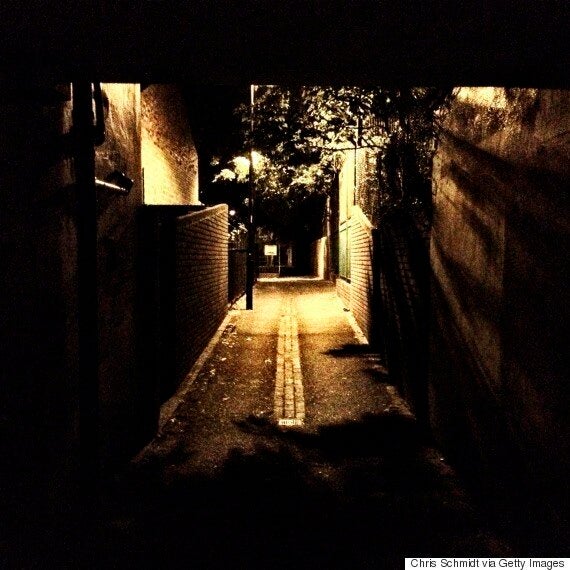
Many patients are attacked on London's streets [File photo]
In Peter’s case, as with many, the Redthread workers also focused on the victim’s family, in this case the boy’s mother. “She was completely overwhelmed by the impact on her son, who she never dreamed would be stabbed. To help her go through all of it as well was so important, because that helped their relationship in the end. At times it can get fraught in the hospital because she was so stressed and overwhelmed, and he was so stressed and overwhelmed, and it clashed at times.”
Peter is now out of hospital, being helped by victim support workers and his college. “That’s when we then pull out,” Burr says. But his family their work can touch more people: “He’s got a younger brother as well, so you don’t just end up with one young person on their own where you can’t see what’s going on. You’re in the middle of it, and you can see this parent’s absolutely terrified that the younger sibling’s going to [experience the same thing]. And you can be there to have these conversations.”
Inevitably, not all of Reece and Burr’s charges survive. Some have been killed in further violence after recovering and leaving hospital.
“It’s the worst thing that I think I’ve ever gone through,” Burr admits. “From the moment you find out that something’s happened, you spend that day trying to find out if it’s somebody you know, or how you can support those people who are affected. We don’t do long-term work but we don’t disappear from young people’s lives, we make sure they and the workers that they are now with know we’re still there and they can phone us.”
Sometimes the ideas “sparked” by conversations with a patient don’t take effect until after they leave. “It can take a few weeks,” Burr says of Mo, a seemingly hopeless case who was very angry about being stabbed. “This anger was all he could process, to the point that he tried to pull his cannula out and was shouting at me - but he gave us his telephone number.”
The pair were forced to focus solely on convincing Mo to stay in the hospital to complete his medical treatment, but when she called him a week after he left hospital, he was unrecognisable.
“He was like ‘I need to move, I need help with my housing, I’m not safe.’ And actually he was really open. I went and met him and had coffee with him, and he was so polite to me. He said ‘Thank you for everything, it was really nice to meet you and John, it’s so good that John got my number.’ And now he’s working with an organisation in Camden around his housing, so he can hopefully put some things in place to get himself moved. He wants to do it himself, he wants to get a job, he really wants to build those bases for himself.”
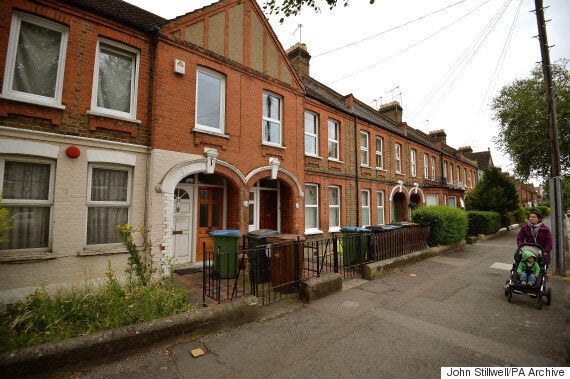
Many of the young people struggle with housing
Housing is a common problem. One teenage boy who was hit in the jaw with a hammer had been struggling to live in a overcrowded one bedroom flat with his mother and two siblings. Here, Redthread’s work focused on housing and supporting his mother, whose young daughter also has a medical condition.
"I just wanted to say thank you for everything you have done for us as a family. We will always remain in touch,” the mother told Burr and Reece.
The pair of youth workers are kind and compassionate, not the hardened professionals you might expect after facing face gory and heartbreaking situations daily. But to perform their jobs must take huge emotional resilience.
“Anyone who knows me at work knows I am not emotionally tough, I am an absolute wimp,” laughs Burr. “I think you learn, really well, how much you can manage in a day, how much you can proces, with the young people at the heart of everything. If I’ve had enough for one day, I can say to John I actually can’t go to my next meeting, because I’m not ok at the moment.
Redthread’s workers – now in King’s College Hospital, Royal London Hospital and St George’s, have clinical supervision sessions every two weeks to discuss any difficulties.
“Being part of the hospital team itself helps too I think,” Burr adds, “because we couldn’t do this if we didn’t have the other medical professionals around who we’ve got a really good relationship with.
“Last week there was a young guy getting an injection into a wound, which I think possibly was the most disgusting thing ever. But he needed me to be absolutely fine, because he was fine. If I’d been the one going over the top about it, I wouldn’t have been doing my job, I wouldn’t have been there for him and what he needed. After that moment I found the two doctors who’d been with him and we sat and had a really good conversation about the fact that there had been a number of young people in this week and it had been quite a traumatic week for everybody.”
Rahman believes he is seeing more gang violence, but thinks this could be because “staff members’ eyes are being opened” by working with Redthread. “Having the guys here has made a big difference,” he says, acknowledging that in some cases their work is not enough to stop a young person being killed when they return to normal life.
“Sometimes I think it just shows how difficult it is, despite everything that the hospitals do, that the communities do, that social services and the police do, there are some people who are so engrained in that, that they do unfortunately come back dead. But I think we’re seeing a lot more positive cases of people who have come back who have been really positive about the service.”
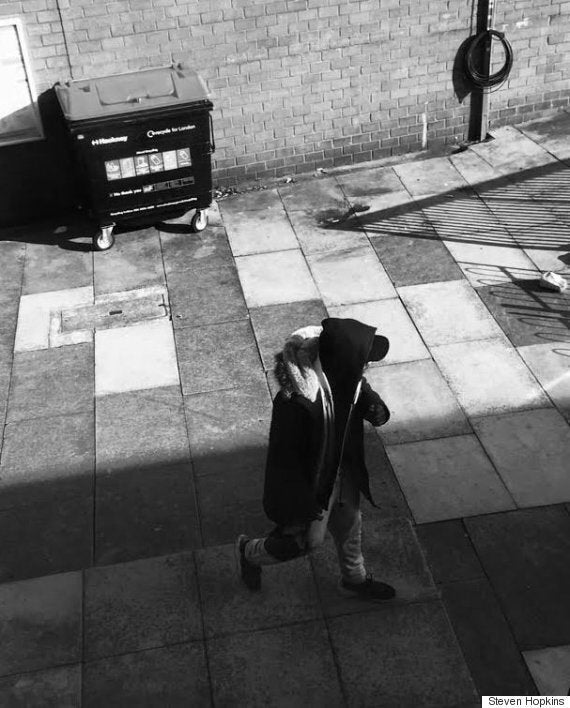
There may have been more cases of youth violence in recent years
Rahman has noticed that more and more young people who come to the trauma unit are aware that Redthread exist, and that it can help them.
Even in cases like that of Chris, who was clinically dead and was brought back to life, Redthread can bring the hope that they need.
After his show of bravado, his 'teachable moment' finally came from thinking about a future that he never though he'd have.
“I said, ‘What would a 25-year-old you say if he was looking at you?’” Reece says. "He had never considered what that might be like, or if he would get that far. He became really hard on himself and said, ‘I’d say what am I doing, I can’t believe I’m doing this,’ and it really made him stop and think. I could sense a shift in the way he was.
“The bravado stopped, and he allowed himself to think about what he might have. He said he wanted to have a job, to have a wife, to have children – quite young to have all those things, but that’s what he wanted. And I think he found it hard to think about all those things as a 16-year-old that was involved in so much violence.”
Chris is now flourishing: “He’s at college, he’s doing well,” Reece beams. “He’s not getting intro trouble, he’s not been arrested.” Chris's story reflects Redthread's awareness that the smallest of gestures can be the beginning of a whole new life, though it may not seem that way at first.
That is summed up by the thanks of a homeless 21-year-old, who Redthread helped to house after he was stabbed three times in the leg – one year after being stabbed eight times near his home. “It was a big help man, thanks so much,” he says to the charity for helping him get back on his feet. “It all started with you”.
Names of victims have been changed to protect anonymity
Redthread was shortlisted for the Centre for Social Justice Awards 2015, which recognise UK charities that display innovation and effectiveness in addressing the root causes of poverty, transforming lives and reversing social breakdown. The Huffington Post UK is the media partner for the awards
